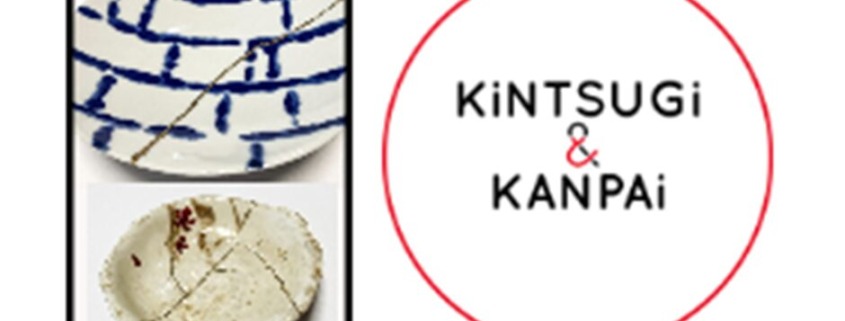
Date: Tuesday, March 26
Time: 6 – 8pm
Description:
Kintsugi is a traditional Japanese art form in which gold is used to repair broken ceramics. The practice of Kintsugi highlights the break rather than erasing it and emphasizes that the break, or “trauma”, is what makes the ceramics more valuable and treasured. This workshop will focus on the healing process from trauma due to the pandemic through this art form. In this beginner’s workshop, participants will learn the basic technique of Kintsugi on a small porcelain plate or a small ceramic plate to understand the fundamentals of this process. All materials including adhesives in the workshop will be food-safe, and approved by the Japanese Government. We will also use an artificial Urushi (the natural resin collected from the lacquer tree) sap for this beginner’s class, which is safe to touch without allergy reactions.
Kinstugi: Kin- Gold, Tsugi – noun form of Tsugu (verb), which means mending.
Urushi: Toxicodendron vernicifluum (Asian lacquer tree) is an Asian tree species of genus Toxicodendron native to Asia, and cultivated in regions of China, Japan and Korea. Other common names include Japanese lacquer tree, Japanese sumac and varnish tree. The trees are cultivated and tapped for their toxic sap, which is used as a highly durable lacquer to make Chinese, Japanese, and Korean lacquerware.
The trees grow up to 20 meters tall with large leaves, each containing from 7 to 19 leaflets. The sap contains the allergenic compound urushiol, which gets its name from this species’ Japanese name urushi (漆). Urusgi is also used in English as a collective term for all kinds of Asian lacquerware made from the sap of this and related Asian tree species, as opposed to European “lacquer” or Japanning made from other materials. Urushiol is also the oil found in poison ivy and poison oak that causes a rash.
Instructor Bio
Mami Takahashi is a multidisciplinary artist from Tokyo. Using photography, performance, installation, and urban intervention, her practice explores the complexities of being Asian and a woman living outside of her home country.
Previous exhibitions and performances have taken place at Portland Institute for Contemporary Art, Portland, OR; San Francisco Art Institute, San Francisco; DANK Haus, Chicago, IL; The International Museum of Art, El Paso, TX; Southern Alberta Art Gallery, Alberta, Canada; Gwangju Folk Art Museum, Gwangju, Korea; Instituto Municipal del Arte la Cultura, DG Mexico and Toriizaka Art Gallery, Tokyo, among other venues. She holds an MFA from Portland State University and a BFA from Joshibi University of Art and Design, Kanagawa. Takahashi is a recipient of the Ford Family Award for MASS MoCA residency and the Pacific Northwest College of Art+Leland Iron Work residency.
Tickets are non-refundable. All ticket sales go to the Japanese Culture Center and instructor. Drink up to support Konbini & Kanpai!



